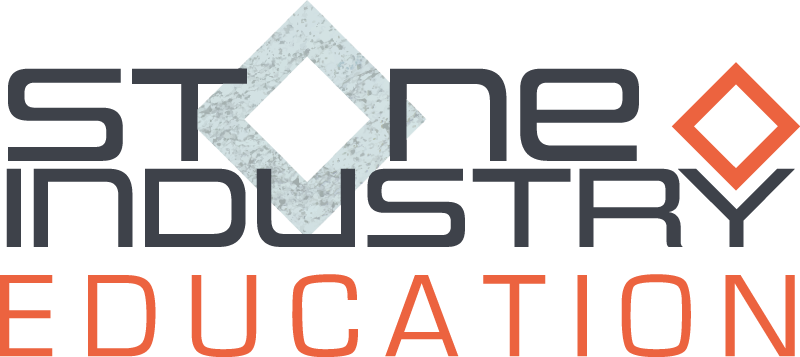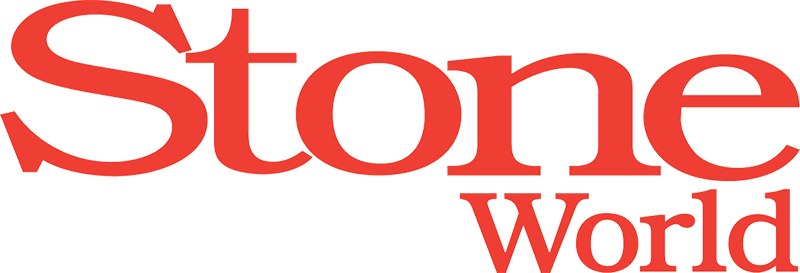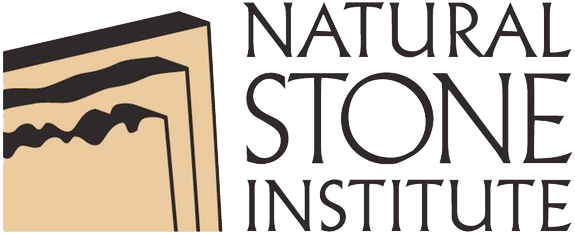Waterjetting isn’t new to stone fabrication, though it is still not the norm. Due to being quick, accurate and safe, waterjets are starting to be featured more in stone shops working in the custom architectural and design fields. From granite to Dekton, abrasive waterjet is perfect for cutting chip-free countertops, intricate medallions, beveled edges, straight cuts and geometric arcs. Common stone applications include quartz blanks for precision mirrors, inlaid marble flooring, decorative wall panels, stone sculptural pieces and, when the need arises, granite gristmill stones. The ability to machine precise dimensions in nearly any material makes waterjet a perfect tool for intricate jobs with expeditious turn-around times. With optional water level control, machining can be done underwater allowing for a significant reduction of harmful dust and particulates.
With the aid of an Omax brand abrasive waterjet, students at the Department of Physics and Engineering at Fort Lewis College in Durango, CO, are learning how their fabrication and manufacturing education can help solve concerns around the world. Recently, the program’s seniors worked in unison with the Bhotia Foundation to reinvent a more effective gristmill for the town of Chyamtang, Nepal.
“The goal of the gristmill project is to redesign the ‘stone age,’ hydro-powered gristmill currently used throughout rural Nepal and incorporate modern, efficient mechanical systems,” said Dr. Don May, PE, professor of engineering at Fort Lewis College. “Remote communities in Nepal are dependent on growing a variety of grains for subsistence living. The technology used to construct a village gristmill to grind grain (corn, millet, wheat, barley, etc.) into flour has been passed down through generations with little change. Hand-hewn grinding stones, wooden shafts, wood and stone bearing primitive tentering systems used to adjust the spacing between the grinding stones, and wooden flumes and turbines are all much the same as they were hundreds of years ago.
“While these systems are quite ingenious, they are also horribly inefficient with low power input and long periods of down time when the available water flow just isn’t enough to overcome inertia and frication,” May continued.
The Department of Physics and Engineering lab utilizes a large array of machine tools to ensure they can fabricate with nearly any material they come across. “We have an extensive shop that includes a welding room, general fabrication shop, machine shop and a 3D-printing lab,” said Assistant Professor, Devin Leahy, Ph.D. “In addition to our waterjet, equipment includes CNC and manual mills and lathes, MIG/TIG/gas welding, manual plasma cutter, polymer 3D printers, composite hand layup tools and other general woodworking and metalworking equipment.”
In 2018, the program added an Omax brand waterjet, the Maxiem 1515, to its already remarkable fabrication lab. The waterjet cuts everything from aluminum and steel to glass and ceramic. Omax’s software, IntelliMAX, allows for total control of the machining process. Low-pressure pierce and garnet flow manipulation allow for perfect fabrication of brittle materials making the process particularly attractive to shops specializing in rare materials.
“If we can work with 2D components, the ease of programming and lack of tooling setup makes the waterjet dramatically faster and safer to use than our CNC mill or lathe,” explained Leahy. “The abilities to cut extremely thin stock without shatter, or cut nonmetallic materials, are also huge benefits.
“Until we had the waterjet, only a few of our students were willing to put in the effort to learn CNC machining with our mill and lathe,” Leahy went on to say. “The waterjet has been easier to use than we expected, and we are regularly impressed with the ability to accommodate very thick and thin materials.”
“Working with a local foundation that promotes development in rural Nepal, the Fort Lewis College Engineering gristmill team has redesigned each component of the mill with the goal of improving power and efficiency to a level needed to provide year-round operation,” said May. “To assure cultural acceptance of the redesigned mill by the users, the mills appearance and mode of operating were kept basically the same. Steel shafts, modern bearings improved hydraulics and an engineered turbine are all part of the revised system.”
The Maxiem 1515 cut the grinding stone, the center piece of the gristmill. “In Nepal, villagers will continue to provide the mill with grinding stones for use with the improved mill frame,” explained May. “To simulate this condition, it was necessary for us to fabricate our own grinding stones for laboratory testing. In lieu of using a hammer and chisel, we elected to cut the cylindrical stones plate from granite slabs using the waterjet. Based on measurements made by our NGO partner of the stones in Chyamtang, we cut a series of three identical stones, each with a center shaft hole and tee slot.”
Fort Lewis College’s Maxiem does more than cut granite. Uses for the cold-cutting, easy-to-use waterjet are exponential. The waterjet can cut nearly any material available and Fort Lewis College is proving that. “Beyond the gristmill granite, the waterjet has already been used to create several other student projects, including a robot and a half-scale airplane, and it has provided a great deal of test coupons for a material testing class,” said Leahy. “I have been experimenting with cutting out complex 3D components by rotating the stock and cutting on two perpendicular faces. The process isn’t yet preferred, but it may be another manufacturing option for our students in the future.”








